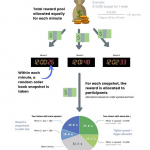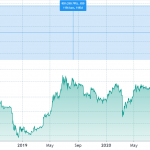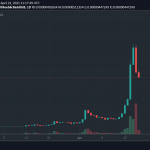Noelle Acheson is a 10-year veteran of company analysis and corporate finance, and a member of CoinDesk’s product team.
The following article originally appeared in CoinDesk Weekly, a custom-curated newsletter delivered every Sunday, exclusively to our subscribers.
What do we mean by ‘blockchain regulation’?
It’s something we hear governments, incumbents and startups say we need, but no one seems to be clear on what it involves. For example, this past week Russia’s government announced that it will have blockchain regulation in place by 2019, though details were hard to come by.
Yet broad promises like that reveal a lack of understanding of what blockchain technology offers. While it’s possible that the reports don’t carry all the information, assuring regulation of an evolving technology within any time span is a vague promise that can’t be kept.
An event at the European Parliament this week highlighted a different approach: a focus on discovery. Rather than start with what the technology must be stopped from doing, the idea seems to be to first figure out what it can do, help it develop and then work on how to protect the consumer.
Yet, even this approach has its drawbacks. First, regulators will have to decide what exactly it is that they’re regulating. The underlying code? Or the uses?
Regulating software is like regulating a car. If it isn’t used, it’s not dangerous. Yet, once someone is behind the wheel, that can change. Rules exist to regulate intended behavior.
Also, car design requires certain security precautions. Drivers need to know that the brakes will work and that the engine won’t blow up when ignited. True, hardware is not the same as software, but the premise that some guarantees of security are necessary still holds.
An argument can be made for letting the market decide. Just as car makers that don’t take extra steps to ensure design integrity tend to go out of business fast, so could market rejection render shoddy blockchain craftsmanship irrelevant.
However, when distributed ledgers are used to transfer value (money, securities, titles, etc), waiting for the ‘market to decide’ could have systemic consequences. So, the security measures of the underlying technology will need to be regulated, according to its use.
Defining use
The problem is, we don’t yet know what the uses will be.
The hundreds of pilots and proofs-of-concept currently in motion are but a tip of the iceberg when it comes to potential applications.
Second, the unusual schism (for a technology) of private vs public networks requires two different approaches. While it’s possible to draft laws regarding the development of private blockchains, regulating public networks according to their uses is obviously a non-starter given the international, free-access nature of the distribution. Who would do the regulating?
It’s not even possible to apply the jurisdictional laws of the domicile of the creator, since no one knows the founder of bitcoin’s identity, let alone the location of his (or her) legal base.
However, the main public blockchains have been rigorously tested by the market, and have – to date, at least – proven to be resilient.
So, focus can shift to the applications built on top of public blockchains. Even here reach will be limited, as apps can be launched from anywhere, by anyone, in some cases with indeterminate jurisdiction.
In this case, regulators have no choice but to let the market decide.
Stamp of approval
This could highlight an evolving role for lawmakers: as a seal of confidence.
Regulated apps and use cases would imply a certain level of security, which the market will likely prefer. Even if more innovative opportunities arise in unregulated areas, competitors would soon emerge with the advantage of approval.
The EU appears to be following this path. Its innovation-first philosophy could end up supporting development from two angles: 1) encouraging the exploration of use cases to test impact and laws, and 2) giving entrepreneurs confidence that their ‘approved’ applications will be more trusted by their target markets.
This approach, combined with the EU’s scope as regulators for a 28-country economic bloc, could not only encourage an ecosystem of thinkers and doers. It could also end up making Europe a prime destination for blockchain development, as businesses choose the continent for their domicile and as talent flocks to the area.
Hopefully, the economic boost would inspire other areas to adopt similar measures. Shedding defensive regulation in favor of a more supportive approach could change the perception businesses and citizens have of their government.
As MEP Eva Kaili said in this week’s event in the European Parliament:
“Maybe this way we can regain some trust.”
Question in the sand via Shutterstock
Disclaimer: The views expressed in this article are those of the author and do not necessarily represent the views of, and should not be attributed to, CoinDesk.










